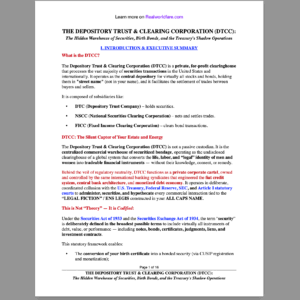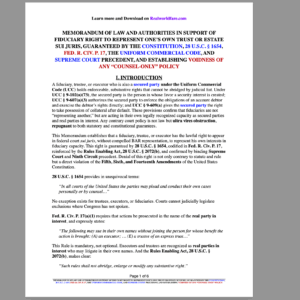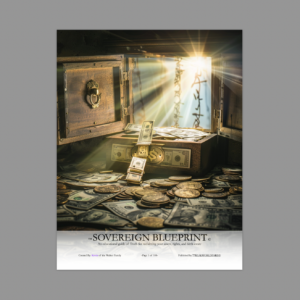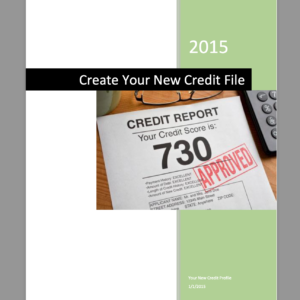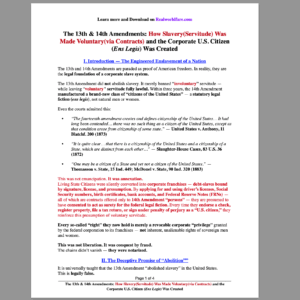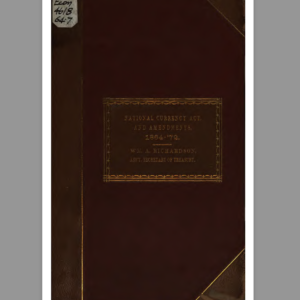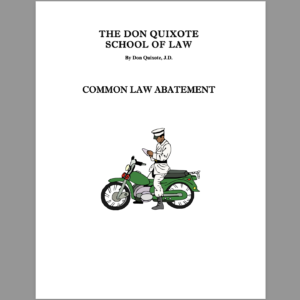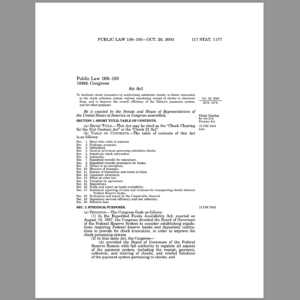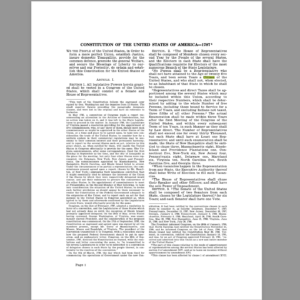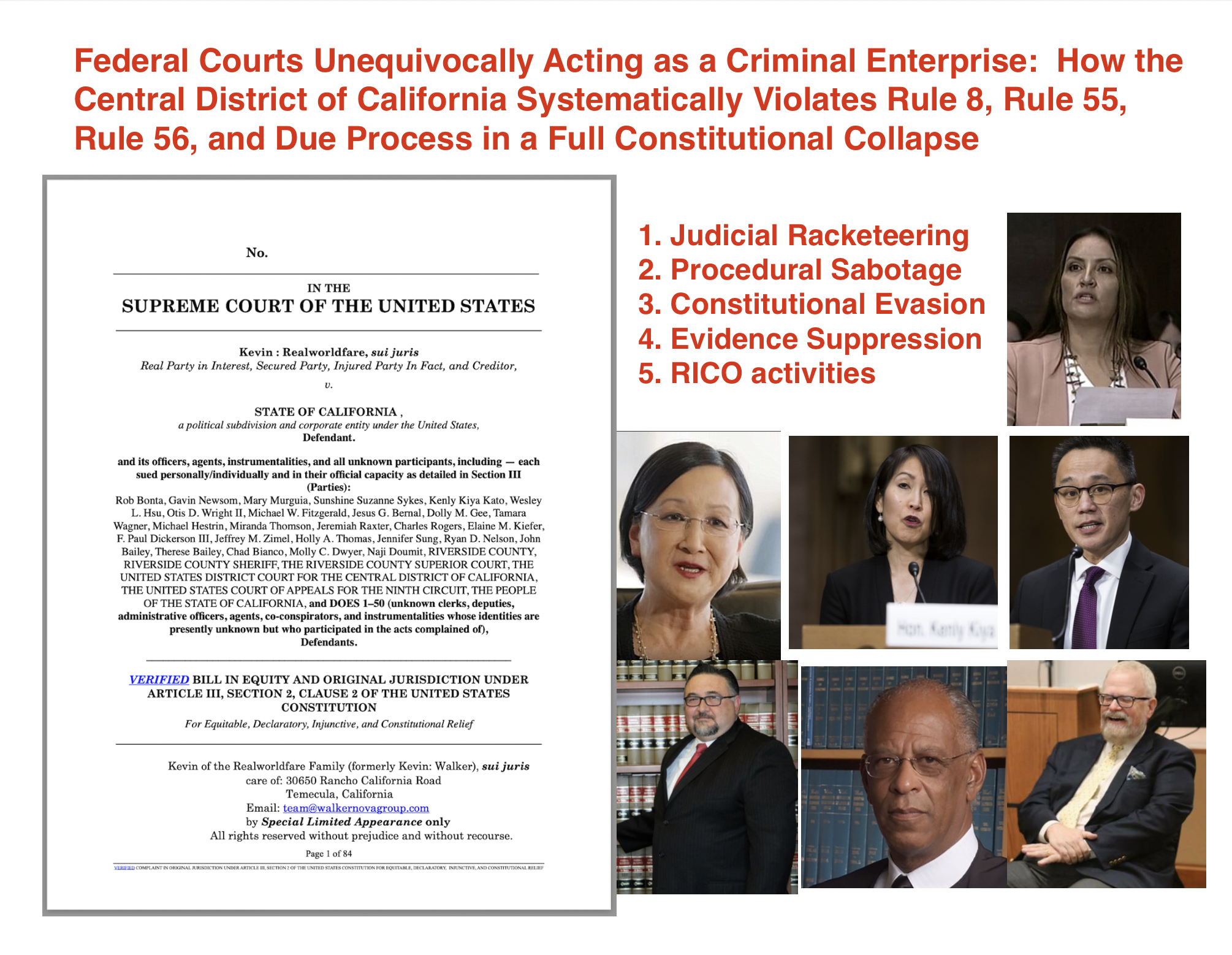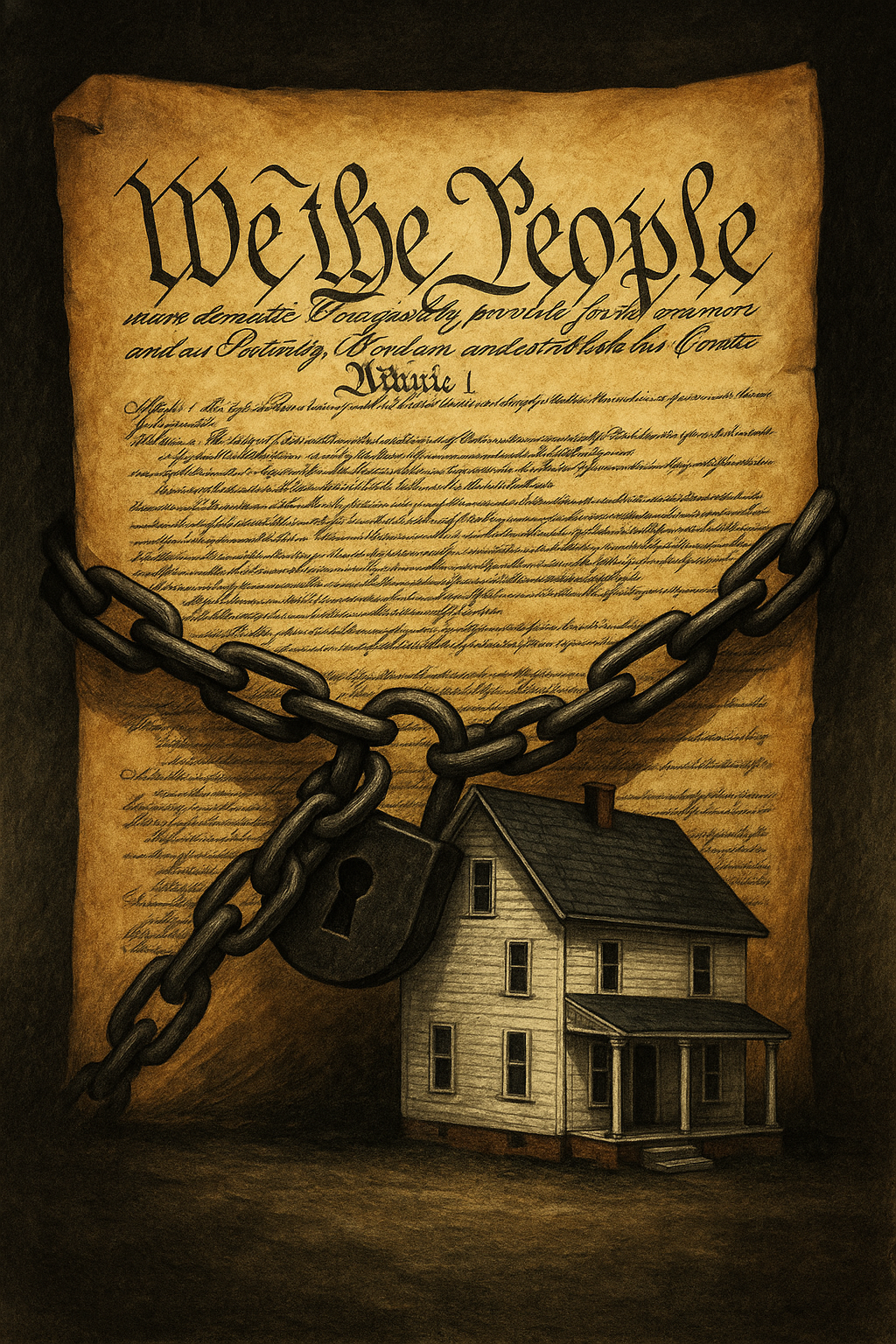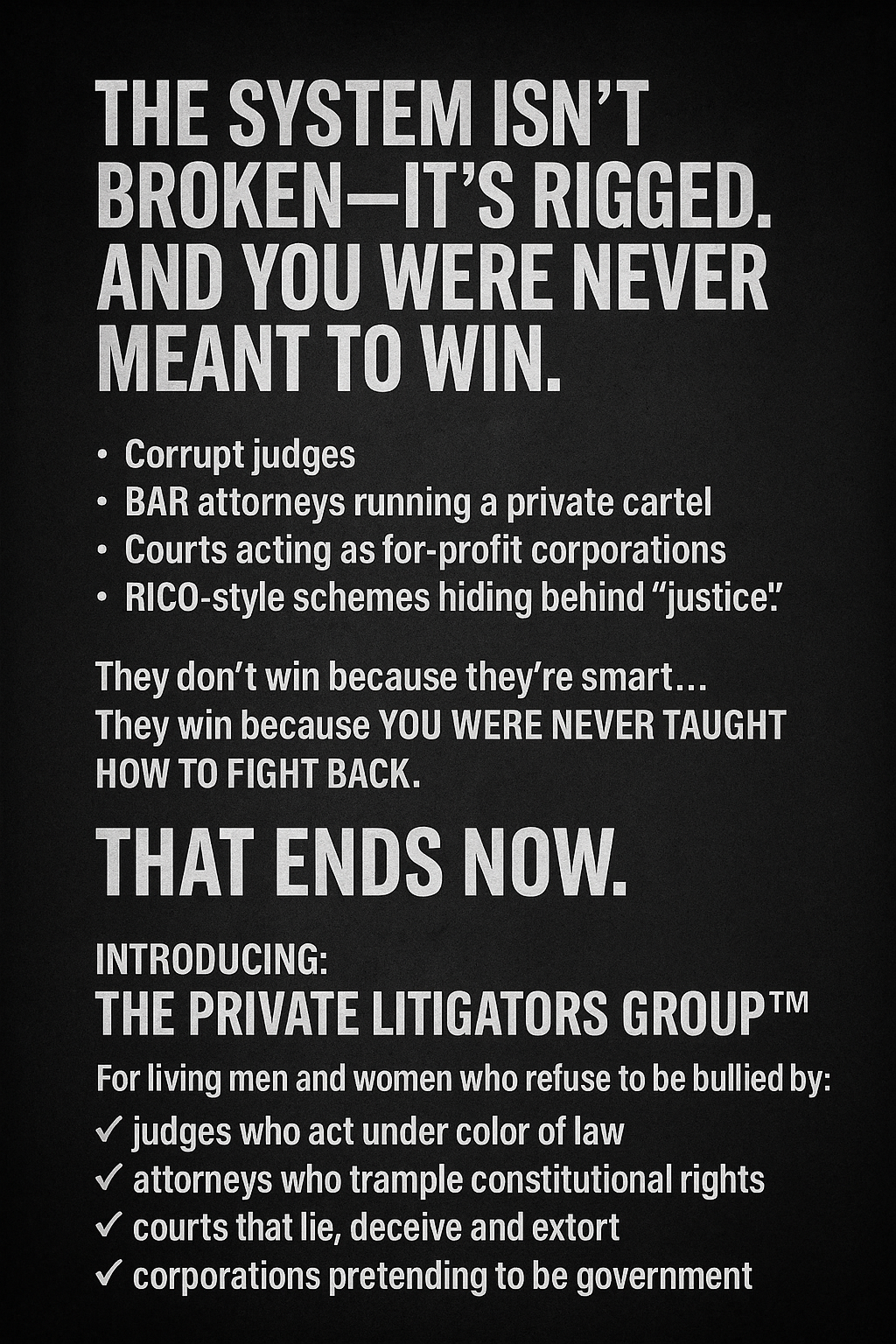To “appear via paper” means you respond to a court summons, complaint, or notice in writing—typically by affidavit, declaration, or motion—instead of physically entering the courtroom. This paper-based appearance constitutes your lawful notice and response, establishing your position and putting the court on administrative notice of your facts, objections, and rebuttals.
You’re still “appearing,” but doing so on your own terms, and without waiving any rights.
🔑 Legal Foundations for Paper Appearance
🏛️ Due Process – 5th and 14th Amendments
The U.S. Constitution guarantees due process of law, which requires that every party receive notice and an opportunity to be heard. However, due process does not require physical presence unless:
-
The court lawfully demands it; and
-
The court can prove proper jurisdiction over the matter and the individual.
You cannot be compelled to appear physically in a jurisdiction that cannot establish both subject matter and personal jurisdiction.
📜 28 U.S. Code § 1746 – Declaration Under Penalty of Perjury
This statute allows anyone to present facts under penalty of perjury without needing a notary. A properly executed declaration under § 1746 holds the same legal weight as in-court sworn testimony.
This is your voice on the record—without ever stepping foot in the courtroom.
⚖️ Corpus Delicti – The Body of the Crime
The corpus delicti rule holds that no one can be lawfully prosecuted without proof that:
-
A crime actually occurred, and
-
There is a victim or injured party, with verifiable damages or harm.
If there is no injured party, no sworn complaint, and no verified damages, then:
-
No valid cause of action exists;
-
The court has no standing;
-
The court proceeds under color of law—which is unlawful.
🧾 How to “Appear” via Paper: Administrative Process
When you appear by paper, you are creating a private administrative record and forcing the other party (typically the court or agency) to prove its authority point-by-point.
Common documents used:
-
Affidavit of Truth / Declaration Under Penalty of Perjury (28 U.S.C. § 1746)
-
Notice of Special Appearance
-
Motion to Dismiss for Lack of Jurisdiction or Failure to State a Claim
-
Affidavit of Non-Consent / No Contract
-
Request for Verified Complaint or Sworn Statement from Injured Party
-
Reservation of Rights under UCC 1-308
Each of these documents lawfully places the burden back on the accuser or the court to prove jurisdiction and authority—which they often fail to do.
🔍 Types of Legal Appearance: Definitions from Black’s & Bouvier’s Law Dictionaries
| Type of Appearance | Definition | Legal Source / Usage | Key Purpose / Effect |
|---|---|---|---|
| In-Person Appearance | The physical act of showing up in court as a party to a legal proceeding. | General Legal Usage (recognized in both sources) | Traditional presence; may imply consent if not objected. |
| Paper Appearance | Responding in writing—via affidavit, motion, or declaration—without appearing physically. | Modern administrative & private process practice | Creates lawful record; avoids joinder or tacit consent. |
| General Appearance | Appearing (physically or in writing) without objection to the court’s jurisdiction. | Black’s Law Dictionary & Bouvier’s | Automatically grants the court jurisdiction. |
| Special Appearance | Appearance made solely to challenge jurisdiction (subject matter or personal), without waiving rights. | Black’s Law Dictionary; Bouvier’s | Preserves right to contest court’s authority. |
| Special Limited Appearance | Appearance made only for a specific limited issue (e.g., to challenge service, clarify name, demand injured party, etc.) | Derived from Black’s and procedural usage | Restricts jurisdiction to that one issue. |
| Constructive Appearance | A legal fiction: party is deemed to appear due to publication service or actions taken, even without actual appearance. | Black’s Law Dictionary | Can create unintended joinder or consent. |
| Voluntary Appearance | A party appears in court without being served; doing so can waive the right to object to jurisdiction. | Bouvier’s Law Dictionary | Often grants court full authority over the person. |
| Compulsory Appearance | When a party appears because process (e.g., summons) was lawfully served and the court compels presence. | Bouvier’s Law Dictionary | Often defaults to general appearance unless specified. |
⚠️ Why This Matters
-
An in-person appearance without a properly worded objection often becomes a general appearance, which grants personal jurisdiction to the court.
-
A paper appearance—especially when declared as special or special limited—reserves your rights, prevents implied consent, and puts the burden back on the court or plaintiff to prove jurisdiction, standing, and corpus delicti.
🧠 Key Argument: No Jurisdiction Without Corpus Delicti
If there is no injured party:
-
There is no crime;
-
No contractual obligation to perform;
-
No valid claim before the court;
-
The court cannot proceed lawfully.
In such cases, a paper appearance functions not only as a rebuttal, but also as a challenge to the entire jurisdiction and the presumed authority of the court.
📜 “He who does not rebut, consents.”
If your sworn affidavit is unrebutted, it stands as truth in commerce and law.
✳️ Special vs. Special Limited Appearance
-
A Special Appearance is made solely to challenge jurisdiction. You are not granting consent to the court’s authority—just appearing to question it.
-
A Special Limited Appearance narrows your presence to a specific purpose, such as:
-
Challenging service of process
-
Correcting the legal name used in pleadings
-
Requesting the identity of the injured party
-
Refusing jurisdiction due to lack of verified claim or contract
-
Appearing in court without this language can result in an unintended general appearance, which may be interpreted as consent to jurisdiction.
🛑 Why This Strategy Matters
If you file a motion, answer a complaint, or attend court without objecting, the court presumes:
-
You consent to its jurisdiction;
-
You waive your rights;
-
You accept the outcome, including any judgment.
Paper appearance lets you:
-
Maintain your rights;
-
Control the administrative record;
-
Lawfully challenge jurisdiction and authority;
-
Avoid creating joinder with a corporate fiction or “ens legis” trust.
⚖️ Black’s Law Dictionary – Definition of “Appear” / “Appearance”
🔹 Black’s Law Dictionary, 6th Edition:
-
To be properly before a court; to submit oneself to the jurisdiction of a court. It may be in person or by attorney and may be made by any act indicating an intent to appear.
-
A coming into court as a party to a suit, either in person or by attorney, whether as plaintiff or defendant.
Types:
-
General Appearance:
A party’s appearance that acknowledges the court’s jurisdiction and waives any objection to it.
-
Special Appearance:
An appearance made solely for the purpose of objecting to the jurisdiction of the court over the person.
The purpose is to avoid a waiver of such jurisdictional challenge by making a general appearance. -
Constructive Appearance:
An appearance which is entered for a party by legal fiction—such as when service is made by publication or other indirect means.
-
📘 Bouvier’s Law Dictionary (1856 Edition) – Definition of “Appear” / “Appearance”
🔹 Appear:
To come into court; as, the defendant appeared in court.
To appear by attorney is to defend a suit without being personally present.
🔹 Appearance:
The act by which a party against whom a suit has been commenced submits himself to the jurisdiction of the court.
Types (per Bouvier):
-
Voluntary Appearance:
When a party appears without being served with process.
-
Compulsory Appearance:
When process has been legally served and the defendant is required to appear.
-
Special Appearance:
When a party appears in court only for the purpose of objecting to the jurisdiction.
This does not confer jurisdiction on the court and is not considered a waiver of rights.
🔍 Summary:
| Type of Appearance | Definition | Key Use Case |
|---|---|---|
| General Appearance | Submitting to court jurisdiction without objections | Waives right to object to jurisdiction |
| Special Appearance | Appearing only to challenge jurisdiction | Preserves jurisdictional objections |
| Limited Appearance | Appearing for a specific purpose only (e.g., service defect, contract dispute) | Limits scope of court authority |
| Constructive Appearance | Implied by law or fiction (e.g., through publication) | Often seen in civil suits/public notice |
| Paper Appearance | Administrative filing or sworn declaration in place of physical presence | Useful when no corpus delicti or verified claim |
🧠 Legal Maxims & Remedies
-
“A court must have both subject matter and personal jurisdiction before it can lawfully proceed.”
-
“Jurisdiction can be challenged at any time, even after judgment.”
-
“Consent makes the law.”
If you fail to object, you agree by silence. -
“No one is bound to obey an unlawful order issued without jurisdiction.”
✅ When Is Paper Appearance Most Effective?
-
Minor traffic violations (civil infractions)
-
Unlawful administrative proceedings
-
Cases with no sworn complaint or verified claim
-
Matters involving fictitious entities or presumed consent
-
When no corpus delicti or harmed party can be shown
✍️ Sample Language to Include
“I, John of the Doe family, a living man, hereby make this Special Limited Appearance by paper only, with full reservation of all rights under UCC 1-308, without waiver of rights or consent to these proceedings. I demand verified proof of claim, proof of jurisdiction, and identification of a harmed party under oath and penalty of perjury. Absent such proof, I demand this matter be dismissed for lack of standing and jurisdiction.”
Final Note:
A paper appearance is not “ignoring” the court. It is a lawful, documented rebuttal made via the administrative side of law. If done properly, it challenges presumed authority, protects your rights, and often causes the court to cease further action unless proper jurisdiction and injury are proven.

